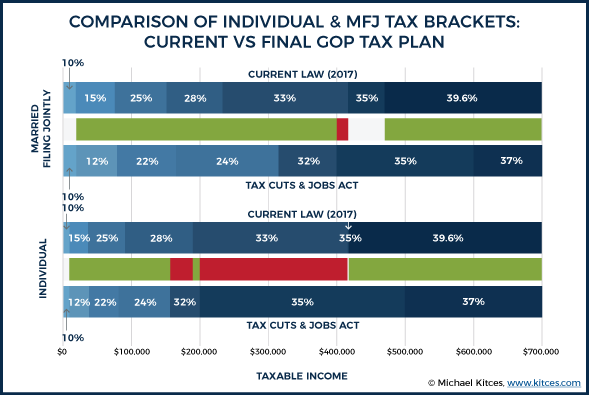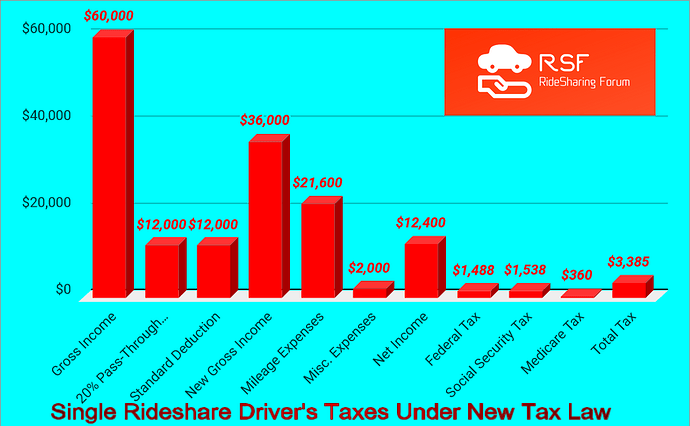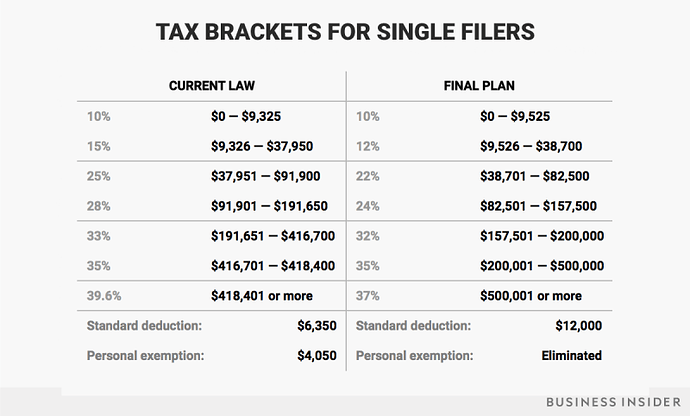If you haven’t been following news lately there’s good news for rideshare drivers, whether you drive for Uber, Lyft or any other delivery services. Recently, Republicans in the House and Senate passed a sweeping $1.5 trillion tax cut. It is one of the biggest tax cut in the history of United States. It affects every part of the US economy; from a very low earning individual to the highest one and same with the businesses.
But what share of the pie does Uber and Lyft drivers get? Well, it’s still a tough question to answer as it’s still too early. Tax experts are scouring over the details of the bill and trying to figure out on how it would affect individuals and businesses. However, there’s one provision in the bill that caught my attention is “Pass-Through” income. These type of businesses would get a 20% deduction on the gross income. This is huge!
So, what is “Pass-Through” income? I’m not tax expert, but as far as I understand, it’s the income from a business that is passed on to it’s owner, like Sole Proprietorship, S-Corps, etc. All these fall in the small business category, and majority of US businesses are structured that way. I file as a Sole Proprietorship and I assume that’s how most Uber and Lyft drivers do too.
In this article, we will try to answer the following questions:
- What are the new tax brackets for Uber/Lyft drivers?
- Are business expense deductions going away?
- What is the standard mileage deduction?
- How does the new standard deduction affect taxes?
Rideshare Drivers and the New GOP Tax Bill
The new Tax Cuts and Jobs Act that recently passed as put Uber and Lyft drivers into a frenzied quest for clarification. What does this new Republican Tax Bill mean to them and how will it affect their income? To start off with, since the bill is new and has not yet been tested completely, it will take time to fully comprehend how it works and effects every working US citizen. I decided to check the bill in detail, go into every line and fathom out the direct consequences it will have on Uber and Lyft drivers.
Disclaimer: I am not a professional finance expert, tax professional or CPA. This is an interpretation of the tax bill as reviewed by professionals from all over the US and compounded here. If you are seeking tax advice, please contact a professional.
Introduction
The tax bill is aimed at strengthening small businesses, therefore, since every rideshare driver is an independent contractor, and as such, drivers are the main target of this bill. The bill is extremely complex and will require some time to map out and create easy to understand interpretations, until this happens, here are a few examples of how the tax bill will affect Uber and Lyft drivers.
The bill, as presented in the official Congrees.Gov site makes the following statements. Source:
https://www.congress.gov/bill/115th-congress/house-bill/1
Tax Cuts and Jobs Act
This bill amends the Internal Revenue Code to reduce tax rates and modify policies, credits, and deductions for individuals and businesses.
With respect to individuals, the bill:
- replaces the seven existing tax brackets (10%, 15%, 25%, 28%, 33%, 35%, and 39.6%) with four brackets (12%, 25%, 35%, and 39.6%),
- increases the standard deduction,
- repeals the deduction for personal exemptions,
- establishes a 25% maximum rate on the business income of individuals,
- increases the child tax credit and establishes a new family tax credit,
- repeals the overall limitation on certain itemized deductions,
- limits the mortgage interest deduction for debt incurred after November 2, 2017, to mortgages of up to $500,000 (currently $1 million),
- repeals the deduction for state and local income or sales taxes not paid or accrued in a trade or business,
- repeals the deduction for medical expenses,
- consolidates and repeals several education-related deductions and credits,
- repeals the alternative minimum tax, and
- repeals the estate and generation-skipping transfer taxes in six years.
For businesses, the bill:
- reduces the corporate tax rate from a maximum of 35% to a flat 20% rate (25% for personal services corporations),
- allows increased expensing of the costs of certain property,
- limits the deductibility of net interest expenses to 30% of the business's adjusted taxable income,
- repeals the work opportunity tax credit,
- terminates the exclusion for interest on private activity bonds,
- modifies or repeals various energy-related deductions and credits,
- modifies the taxation of foreign income, and
- imposes an excise tax on certain payments from domestic corporations to related foreign corporations.
- The bill also repeals or modifies several additional credits and deductions for individuals and businesses.

Source:
Business Deductions or Gross Income Tax
Business deductions are not disappearing; they will continue to be a viable source of income calculations since many businesses that live by a small profit margin, such as gig economy drivers, would be eradicated through a gross income tax. In reality, the gross income earned by drivers will continue to have deductible expenses and the taxes paid before the bill will now go down after the bill. This is due to the new income tax brackets that the bill introduces. Unless you earn over $200,000 a year, which no Uber or Lyft driver earns, your income Modified Adjusted Gross Income (MAGI) will, in fact, be lower. Since most drivers earn around $40,000 after deductions a year, their federal income tax with the new tax bill will be $4,739.50 in 2018, which is significantly less than the $5,653.75 they will pay this year 2107.
The calculations are basic; most drivers make less than a Modified Adjusted Gross Income (MAGI) of $40,000 per annum. A business mile is set (at the moment) at $0.535 cent deductible, and most drivers will reach 50,000 business miles a year. This means that their total deductions will be around $26,759, which leaves around $13,241 for tax purposes.
Here’s another example of a single rideshare driver’s taxes after standard deduction, 20% pass-through deduction and business expenses(mileage and miscellaneous). In this hypothetical scenario, driver drove a total of 40,000 miles and made a $60,000 gross income. After all the deductions and expenses, driver’s income fall under the second bracket, which is 12%. I used 12.4% for social security tax, and 2.90% for medicare tax rates.
Your expenses could be lot different than what I depicted above, most likely the expenses would be higher. Thus, even lower federal, social security and medicare taxes.
Summary: Business deductions do not disappear, and in fact, deductions go up, saving drivers more end of the year income as net profit.
Source: Yahoo Finance
Standard Deduction for Individuals
Another big difference that this bill brings is the extremely large standard deduction amount. Before the bill it was set at $6,500 for an individual and single people, the tax bill has raised this amount to $12,000. Why is this so important? It means that for a driver earning $40,000 a year before he deducts his expenses, he can deduct $12,000, which means his taxable income starts at $28,000. Now the driver can deduct his business expenses from this amount; this means that we deduct $26,759 Standard Mileage Deduction and end up with a taxable income of only $1,241. That means, any driver earning $40,000 a year will now pay $124.10 at the end of the year.
Summary: Standard deductions double, reducing taxable income by $12,000.
20% deduction for Small Businesses
Any individual owned registered business (this includes sole proprietor, partnership, LLC or S-Corporation) earns less than $157,000 a year or married registered business that earns less than $315,000 will be eligible for the federal 20% pass-through income deduction on top of the adjusted deductions. This means, that after you calculate your income and expenses and after you calculate your adjusted taxes, you get a further 20% deduction on the taxable remainder, which increases your profit margin even more.
Some drivers do register as a business since they work for more than one source of income and their gross earnings go above $100,000 a year. This 20% pass through a deduction on the qualified business income (QBI) is an added bonus. Also, since all Uber and Lyft drivers are registered as sole proprieties, they are all eligible for the 20% pass through but make sure that their income is within the bracket defined by the bill. If you earn more than $157,000 (single) or $315,000 (married), then you are very successful, but won't get the 20% pass through.
Summary: QBI is deductible from the income delta that is taxable, reducing taxable income by a further 20%.
https://test.ridesharingforum.com/t/tax-for-uber-and-lyft-drivers-explained/529
Itemized Deductions
The new tax bill does affect some of the larger itemized deductions, for instance; only mortgage interest on loans with a principle no greater than $750,000 will be deductible. Moving expenses for military personnel only will continue to be deductible, but not for civilians. State and Local Taxes (SALT) will now have a $10,000 cap. The SALT cap means that people living in expensive areas will be hit harder due to the property taxes that are included in the $10,000 SALT cap. Most if not all rideshare drivers will choose to keep the standard deduction rather then the itemized SALT deduction since the SALT deductions will be lower than $10,000 in any event.
Summary: Drivers should not prefer the SALT cap since it will pay out less.
Health Insurance
Health insurance is still mandatory for 2017 and 2018 if you want to avoid the tax penalties incurred by the Affordable Care Act. However, 2019 begins without the penalties and through removing these penalties it is predicted that premiums will start to go up. A report made by the Congressional Budget Office (CBO) states that once the penalties are removed, the premiums will start to rise by an increment of 10% per annum, and by the year 2027 13 million US citizens will be uninsured.
Summary: Drivers should get health insurance no matter what happens.
2025 – The end of the Bill
Starting 2018, when the tax bill really begins to take effect, most if not all drivers will end up paying fewer taxes. When you combine the Standard Mileage Deduction of $0.535 per mile, Standard Deduction of $12,000, and the 20% pass-through deduction, most drivers will end up paying double-figure taxes only. This fiesta will last till 2025 when the tax bill expires, or if Congress decides to make adjustments along the way. The only deduction that continues after this time will be the Corporate Tax Rate that drops 10% from 31% to 21%.
Summary: The tax bill benefits last until the year 2025.
Conclusion
I only touched a fraction of the details that the new tax bill covers, over the next few months as more and more details become clearer, the final picture of how the bill affects all of us will be collated and presented.


